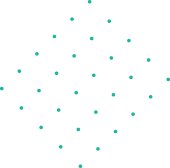Python has appeared as one of the most broadly used programming languages due to its user-friendly syntax, vast libraries, and flexibility. Whether you’re working in web development, data science, artificial intelligence, or automation, Python provides the tools needed to build powerful applications efficiently. Understanding the basics—variables, data types, and functions—is the first step in mastering Python programming. If you’re eager to learn Python, Python Classes by Subba Raju Sir at Coding Masters provide expert guidance to help you gain a solid foundation.
Python classes by Subba Raju Sir
A variable in Python is a name that refers to a value stored in memory. Unlike other programming languages, Python does not require explicit variable declaration. You can directly assign a value to a variable using the assignment operator (=).
Example:
x = 10 # Integer variabley = “Hello, Python!” # String variablez = 3.14 # Float variable
Python allows dynamic typing, meaning a variable can hold different data types during execution. Additionally, Python variables are case-sensitive, meaning Age and age are considered different variables.
Variable Naming Rules:
- A variable name must start with a letter (a-z, A-Z) or an underscore (_).
- It cannot start with a number.
- It can only contain alphanumeric characters and underscores.
- Variable names are case-sensitive.
- Reserved keywords cannot be used as variable names.
Types of Variables in Python:
- Global Variables – Defined outside of a function and accessible throughout the script.
- Local Variables – Defined within a function and accessible only inside that function.
- Instance Variables – Used in object-oriented programming and belong to an instance of a class.
- Class Variables – Shared among all instances of a class.
Exploring Data Types in Python
Python has several built-in data types that categorize the type of data a variable holds. Some common data types include:
Numeric Types
Python supports three main numeric types:
- Integer (int): Whole numbers such as 42 or -5.
- Floating Point (float): Decimal numbers such as 14 or -0.01.
- Complex (complex): Numbers with a real and imaginary part, like 3 + 4j.
Numeric types support mathematical operations such as addition, subtraction, multiplication, and division.
Sequence Types
Sequence types store collections of items:
- List (list): A mutable collection of ordered items, defined using square brackets ([]). Lists allow modification, making them useful for dynamic data storage.
- Tuple (tuple): Similar to lists but immutable, meaning their values cannot be changed after assignment.
- Range (range): Represents a sequence of numbers, often used in loops.
Text Type
- String (str): A sequence of characters enclosed in single, double, or triple quotes. Strings support various operations like concatenation and slicing.
Set Types
- Set (set): An unordered collection of unique elements, used for operations like union and intersection.
- FrozenSet (frozenset): Similar to a set, but immutable.
Mapping Type
- Dictionary (dict): A collection of key-value pairs, enabling efficient data retrieval. Dictionaries are enclosed in curly braces {} and use colons : to separate keys from values.
Boolean Type
- Boolean (bool): Represents truth values True or False. Used in logical operations and decision-making statements.
Binary Types
- Bytes (bytes): A sequence of immutable bytes.
- ByteArray (bytearray): A mutable sequence of bytes.
- MemoryView (memoryview): Provides memory-efficient data handling.
None Type
- NoneType (None): Represents the absence of a value or a null variable.
Example:
num = 42 # Integerdecimal = 3.14 # Floatcomplex_num = 3 + 4j # Complex numbername = “Subba Raju Sir” # Stringis_python_easy = True # Booleanfruits = [“Apple”, “Banana”, “Cherry”] # Listdetails = {“name”: “John”, “age”: 25} # Dictionaryunique_items = {1, 2, 3, 4} # Setcoordinates = (10.5, 20.8) # Tuplebyte_data = b”Hello” # Bytesdata_view = memoryview(bytearray(5)) # MemoryViewnothing = None # NoneType
Understanding these data types helps in writing efficient and bug-free Python programs.
Functions in Python
Functions are reusable blocks of code that perform a specific task. Python provides built-in functions like print(), len(), and type(), and also allows users to define their own functions using the def keyword.
Example:
def greet(name): return f”Hello, {name}! Welcome to Python.” message = greet(“Student”)print(message)
Advantages of Using Functions:
- Code reusability
- Better organization and readability
- Easy debugging and maintenance
Frequently Asked Questions (FAQs)
- 1. What is Python used for?
A. Python is used in web development, data science, artificial intelligence, automation, and more.
2. What are variables in Python?
A. Variables store data values and do not require explicit declaration.
3. What are Python’s numeric data types?
A. Python has int, float, and complex numeric types.
4. How do I define a function in Python?
A. Use the def keyword followed by the function name and parentheses.
5. What is dynamic typing in Python?
A. Python allows variables to change data types dynamically.
6. What is the difference between a list and a tuple?
A. Lists are mutable, while tuples are immutable.
7. What is a dictionary in Python?
A. A dictionary is a collection of key-value pairs.
8. What are Python’s Boolean values?
A. True and False represent Boolean values in Python.
9. How do you check the type of a variable?
A. Use the type() function to check the data type.
10. What is a set in Python?
A. A set is an unordered collection of unique items.
11. What is the purpose of the NoneType in Python?
A. None represents the absence of a value.
12. What is the difference between bytes and bytearray?
A. bytes is immutable, while bytearray is mutable.
13. How do you declare a string in Python?
A. Use single or double quotes, e.g., ‘Hello’ or “Hello”.
14. What is the scope of a variable?
A. Scope defines where a variable can be accessed.
15. What are default arguments in Python functions?
A. Default arguments provide a default value if no argument is passed.
16. How do you create an anonymous function?
A. Use the lambda keyword for anonymous functions.
17. What is recursion in Python?
A. A function that calls itself is recursive.
18. What are Python modules?
A. Modules are files that contain Python code and functions.
19. What is the difference between is and ==?
A. is checks identity, while == checks value equality.
20. How do I learn Python effectively?
A. Join structured learning programs like Python Classes by Subba Raju Sir at Coding Masters.
Conclusion
Python is a versatile and beginner-friendly language, making it an excellent choice for programmers of all levels. Understanding variables, data types, and functions forms the foundation for writing efficient Python code. If you want to take your skills to the next level, consider enrolling in Python Classes by Subba Raju Sir at Coding Masters, where you’ll gain hands-on experience and expert guidance. Start learning today and enhance your programming journey!


